What does the “God particle” sound like?
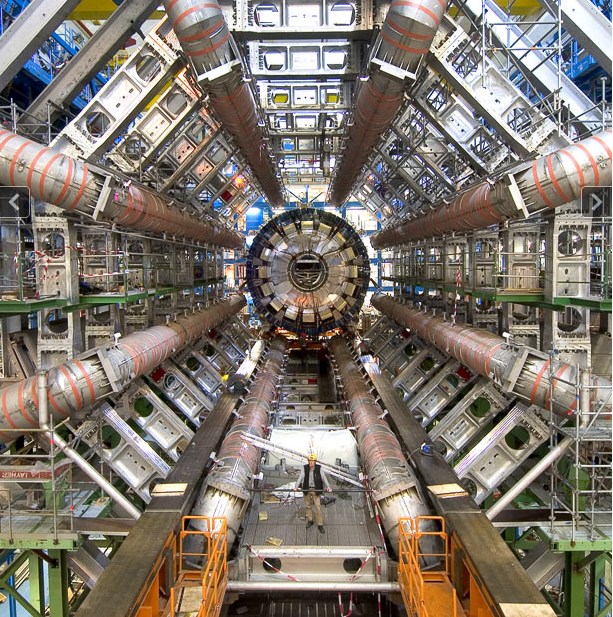
Researchers have recreated the sounds set to be made by particles like the elusive Higgs Boson at the Large Hadron Collider (LHC), near Geneva.
The LHC Sound project aims to raise awareness about the work deep under the French-Swiss border and to develop a way for scientists to listen to the data and identify the Higgs particle, if and when they detect it.
One of the widely publicised aims of the LHC, the world’s biggest atom smasher, is to try to find the mysterious Higgs Boson, the so-called “God particle”, which physicists say gave mass to matter that emerged after the primeval explosion 13.7 billion years ago.
British particle physicist Lily Asquith is one of hundreds of scientists involved in the hunt for the Higgs Boson at the European Organization for Nuclear Research (Cern), near Geneva.
Together with two musicians and a computer developer, she has been converting data from LHC’s Atlas experiment into sound.
Atlas is one of four bus-sized detector chambers, which monitor particle collisions around the 27-kilometre circular underground tunnel.
“LHC Sound started as a public engagement project, but I soon got excited about the possibility of using the sounds for data analysis,” Asquith told swissinfo.ch.
Sonification
An instrument inside the huge Atlas experiment called a calorimeter, made up of seven concentric layers, measures particle collision energy and other data.
Music composition software, such as Csound or Composers Desktop Project (CDP), is then used to convert collected data into sound, a process known as sonification.
This analysis technique is already used by seismologists to predict earthquakes and by Nasa to study astronomical data.
The software matches musical concepts such as pitch with particle momentum, volume with energy and timbre with particle type to create unique sound signatures.
Sound seemed like the perfect tool to represent the complexity of the data coming out of Atlas, explained Asquith.
The PhD physicist from University College London said ears were incredibly sensitive instruments.
“We can hear a vast range of frequencies and distinguish timbres before they have even played a full cycle,” she said. “We also have an incredible ability to notice slight changes in pitch or tempo over time and to recognise patterns in sound after hearing them just once.”
Clear structures
Richard Dobson, a musician who helped map the sounds, said he was surprised by the melodies created.
“We can hear clear structures in the sound, almost as if they had been composed,” he told BBC News.
“They seem to tell a little story all to themselves. They’re so dynamic and shifting all the time, it does sound like a lot of the music that you hear in contemporary composition.”
So far the team have generated a number of simulations based on predictions of what might happen during collisions inside the LHC. But they have already started creating sounds based on real two trillion electron volts (TeV) collisions and will be publishing 7 TeV sounds in the near future.
LHC Sound are also planning live performances of the data this summer, kicking off with a night of “circuit bent acid lounge with a sprinkling of high energy particle collisions” in Brixton, London, in July.
The main incentive, said Asquith, is to “share in the wonder and excitement of the greatest experiment ever built”.
“People really want to know more about the LHC and get involved,” she said.
Up and running
The LHC was launched with great fanfare on September 10, 2008, but broke down nine days later when a badly soldered electrical splice overheated, causing extensive damage to the massive magnets and other parts of the collider deep underground.
It cost $40 million (SFr44 million) to repair and improve the machine so that it could be used again at the end of November last year.
Since then the collider has performed almost flawlessly. At the end of March 2010 the energy of the two proton beams circulating in the tunnel was ramped up to 7 TeV and the beams were successfully smashed together.
The plan is for the LHC experiment to continue at this power for 18-24 months while steadily increasing the proton density in each beam until the end of 2011. It will then be shut down for a year of maintenance and upgrading to prepare it for years of experiments at full power – 14 TeV.
Simon Bradley, swissinfo.ch
In the LHC, high-energy protons in two counter-rotating beams are smashed together to search for exotic particles.
The beams contain billions of protons. Travelling just under the speed of light, they are guided by thousands of superconducting magnets.
The beams usually move through two vacuum pipes, but at four points they collide in the hearts of the main experiments, known by their acronyms: ALICE, ATLAS, CMS, and LHCb.
When operational, the detectors see up to 600 million collision events per second, with the experiments scouring the data for signs of extremely rare events such as the creation of the so-called God particle, the yet-to-be-discovered Higgs boson.

In compliance with the JTI standards
More: SWI swissinfo.ch certified by the Journalism Trust Initiative

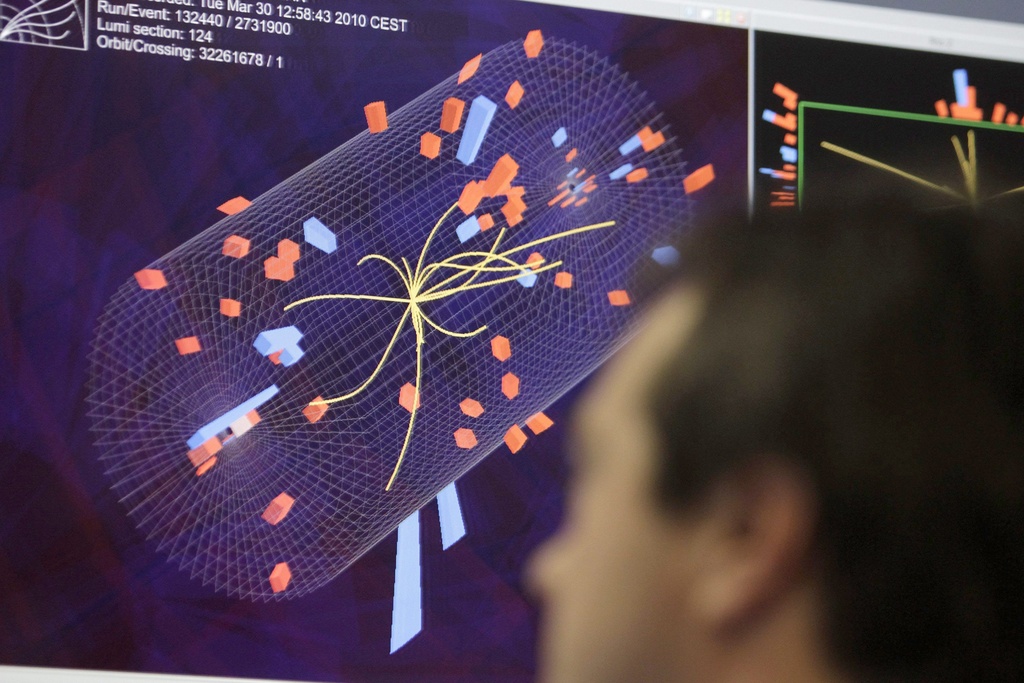
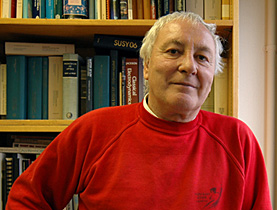
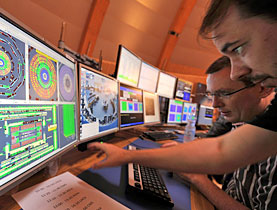
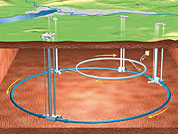
You can find an overview of ongoing debates with our journalists here. Please join us!
If you want to start a conversation about a topic raised in this article or want to report factual errors, email us at english@swissinfo.ch.